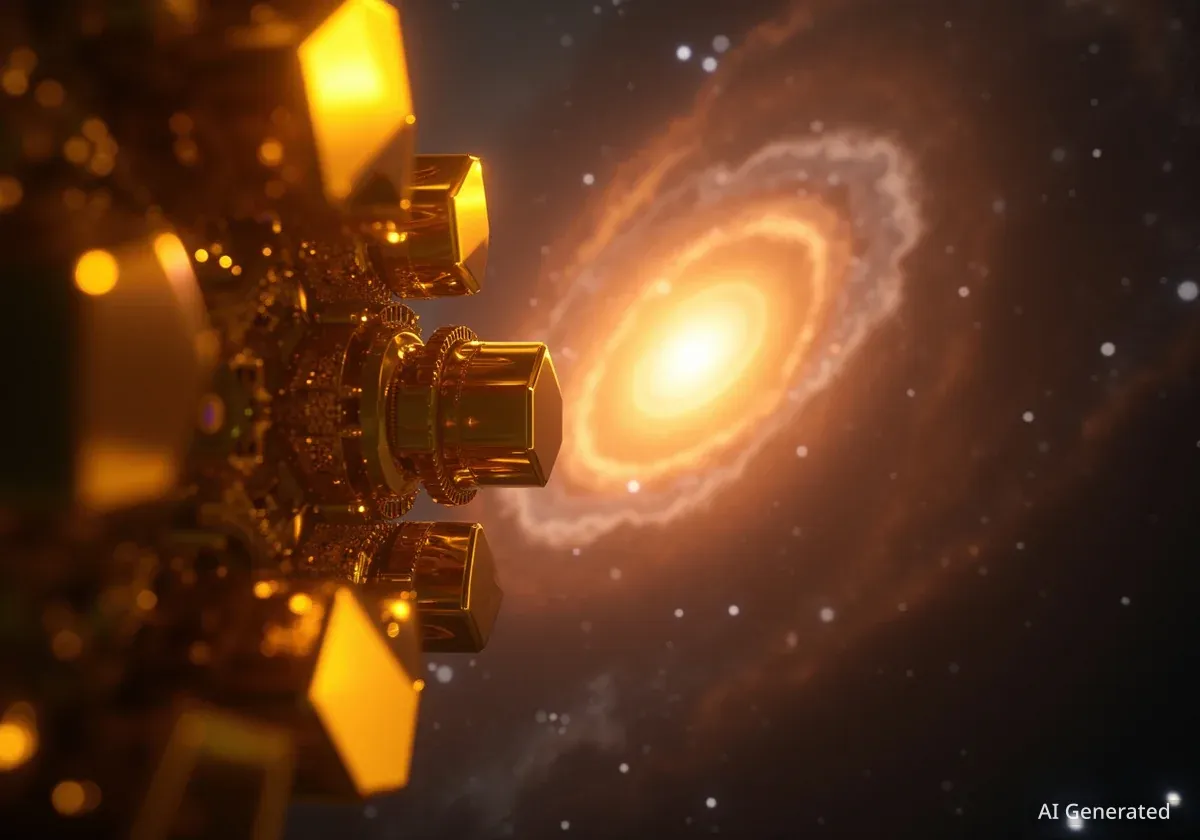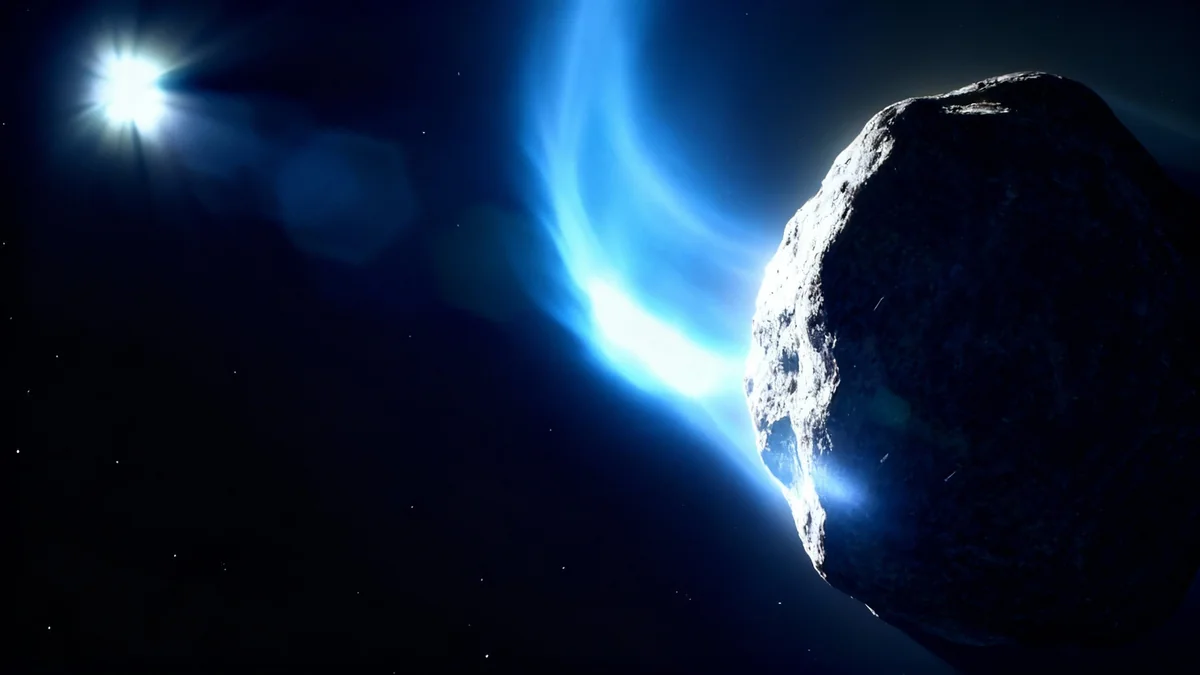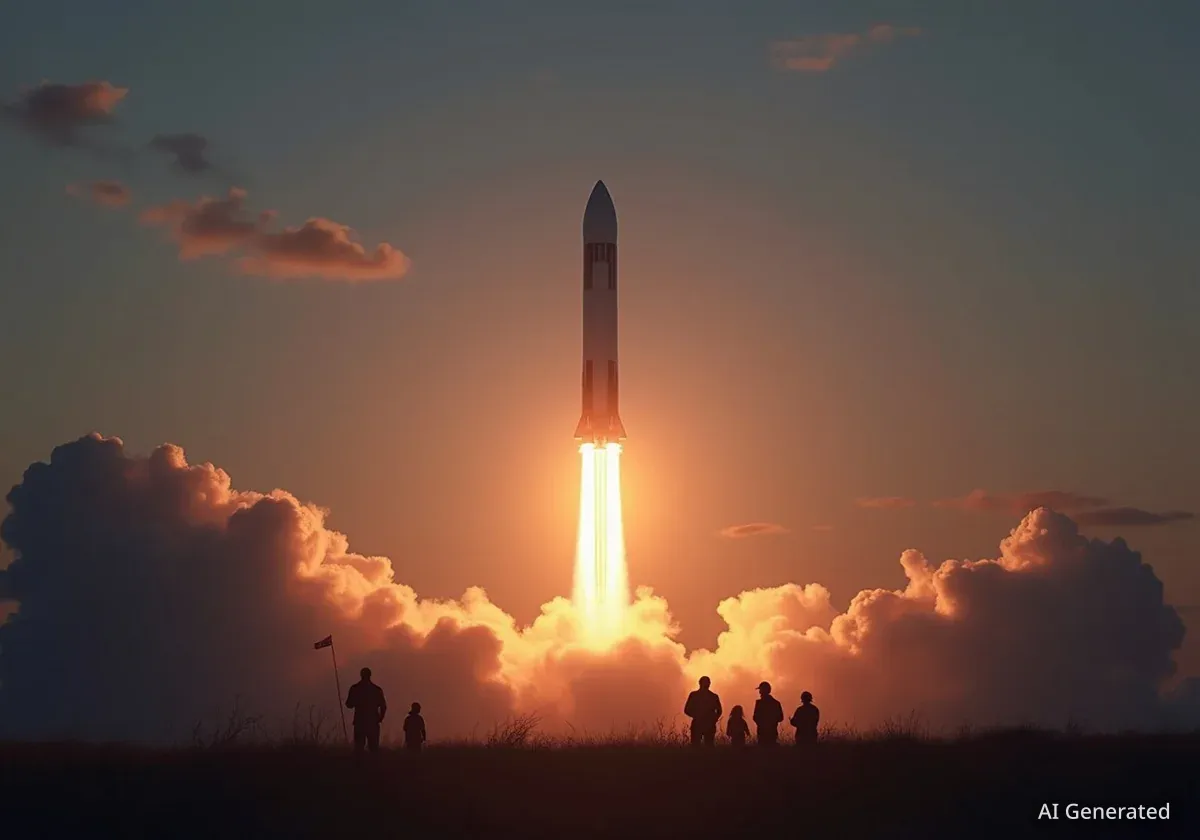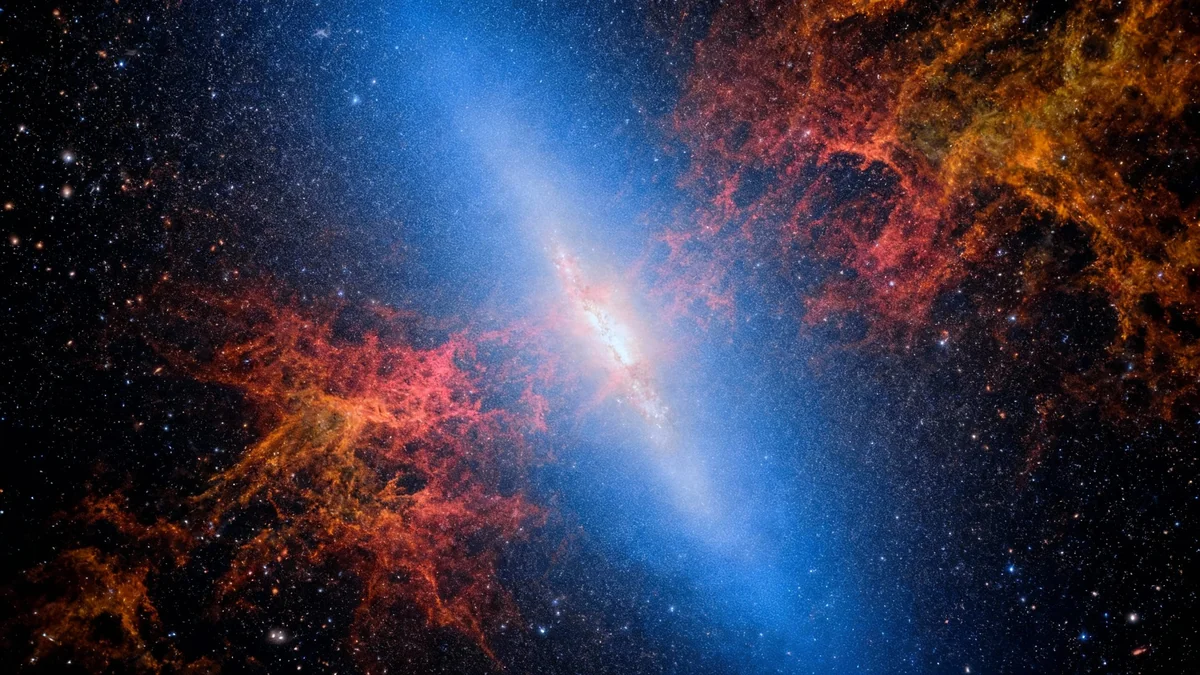The James Webb Space Telescope (JWST) has captured images of a massive star shortly before it exploded, providing strong evidence for why these celestial giants are often hidden from view. This new observation helps solve a long-standing puzzle in astrophysics about the apparent absence of red supergiants before they detonate as supernovas.
Key Takeaways
- The James Webb Space Telescope identified a red supergiant star that later exploded as supernova SN 2025pht.
- The star was located in the galaxy NGC 1637, approximately 38 million light-years from Earth.
- Thick clouds of dust made the star appear over 100 times dimmer, explaining why such stars are hard to detect before they explode.
- This finding supports the theory that massive, aging stars are often surrounded by dense dust, a phenomenon that JWST's infrared instruments can penetrate.
A Long-Standing Astronomical Puzzle
For many years, astronomers have faced a significant inconsistency. Theoretical models predict that massive red supergiants should be the source of most supernovas, which are powerful stellar explosions. However, when scientists have looked at images taken before a supernova occurs, they have rarely been able to identify the originating, or progenitor, star.
This discrepancy led to a leading hypothesis: perhaps the most massive stars are also the dustiest. As these stars near the end of their lives, they may eject large amounts of material, forming a thick shroud of dust that conceals them from optical telescopes. A new study, published in The Astrophysical Journal Letters, provides compelling observational proof for this idea.
What Are Red Supergiants?
Red supergiants are stars far more massive than our sun that are in the final stages of their evolution. They have expanded to enormous sizes, often hundreds or even thousands of times larger than the sun. Their immense gravity eventually causes their core to collapse, triggering a catastrophic supernova explosion.
Researchers have long sought direct evidence of these dust-enshrouded stars. The latest findings from the JWST offer one of the clearest views yet of such an object just before its demise, confirming that these cosmic giants can indeed hide in plain sight.
Identifying the Exploding Star
The supernova, designated SN 2025pht, was first detected in June by the All-Sky Automated Survey for Supernovae. It originated in the spiral galaxy NGC 1637, which is located about 38 million light-years away—a relatively close distance in cosmic terms.
To find the star responsible for the explosion, a team led by researchers from Northwestern University took a multi-step approach. They first analyzed historical images of the galaxy taken by the Hubble Space Telescope. Then, they used the powerful infrared capabilities of the JWST to observe the same location after the supernova had occurred.
By comparing the "before" and "after" images, the team was able to precisely pinpoint the progenitor star. The data showed a massive red supergiant that was present in the older images but had vanished after the explosion, confirming it was the source of SN 2025pht.
"For multiple decades, we have been trying to determine exactly what the explosions of red supergiant stars look like," said lead author Charlie Kilpatrick, a research assistant professor at Northwestern University. "Only now, with JWST, do we finally have the quality of data and infrared observations that allow us to say precisely the exact type of red supergiant that exploded and what its immediate environment looked like."
The Cloak of Dust and Light
The analysis revealed fascinating details about the star's condition before it detonated. The red supergiant was incredibly luminous, shining with the intensity of approximately 100,000 suns. However, it was surrounded by an exceptionally dense cloud of dust.
Dimmed by Dust
The research team estimated that the dust was so thick that it reduced the star's visible brightness by a factor of more than 100. This dimming effect is a primary reason why such stars have been so difficult to find in pre-explosion surveys.
This dust was particularly effective at absorbing and scattering shorter wavelengths of light, such as blue light. This made the star appear much redder than it otherwise would have. This phenomenon is similar to how smoke in Earth's atmosphere can make the sun appear red.
According to Kilpatrick, the star's extreme redness was a key indicator. "SN2025pht is surprising because it appeared much redder than almost any other red supergiant we've seen explode as a supernova," he explained.
JWST's Infrared Vision Changes the Game
The successful identification of this star was made possible by the unique capabilities of the James Webb Space Telescope. Unlike optical telescopes like Hubble, which primarily observe visible and ultraviolet light, JWST is designed to detect infrared light.
Infrared radiation consists of longer wavelengths that can pass through clouds of cosmic dust that would otherwise block visible light. This allowed JWST to peer through the dusty veil surrounding the red supergiant and capture a detailed view of the star before it exploded.
This technological advantage provides astronomers with a powerful new tool to solve old mysteries. The observation of SN 2025pht suggests that previous estimates of the brightness of supernova progenitors may have been inaccurate because scientists lacked the infrared data to see through the dust.
Kilpatrick noted the significance of this new capability. "That tells us that previous explosions might have been much more luminous than we thought because we didn't have the same quality of infrared data that JWST can now provide," he stated. This discovery not only resolves one puzzle but also opens the door to re-evaluating our understanding of the final, violent moments of the universe's most massive stars.





